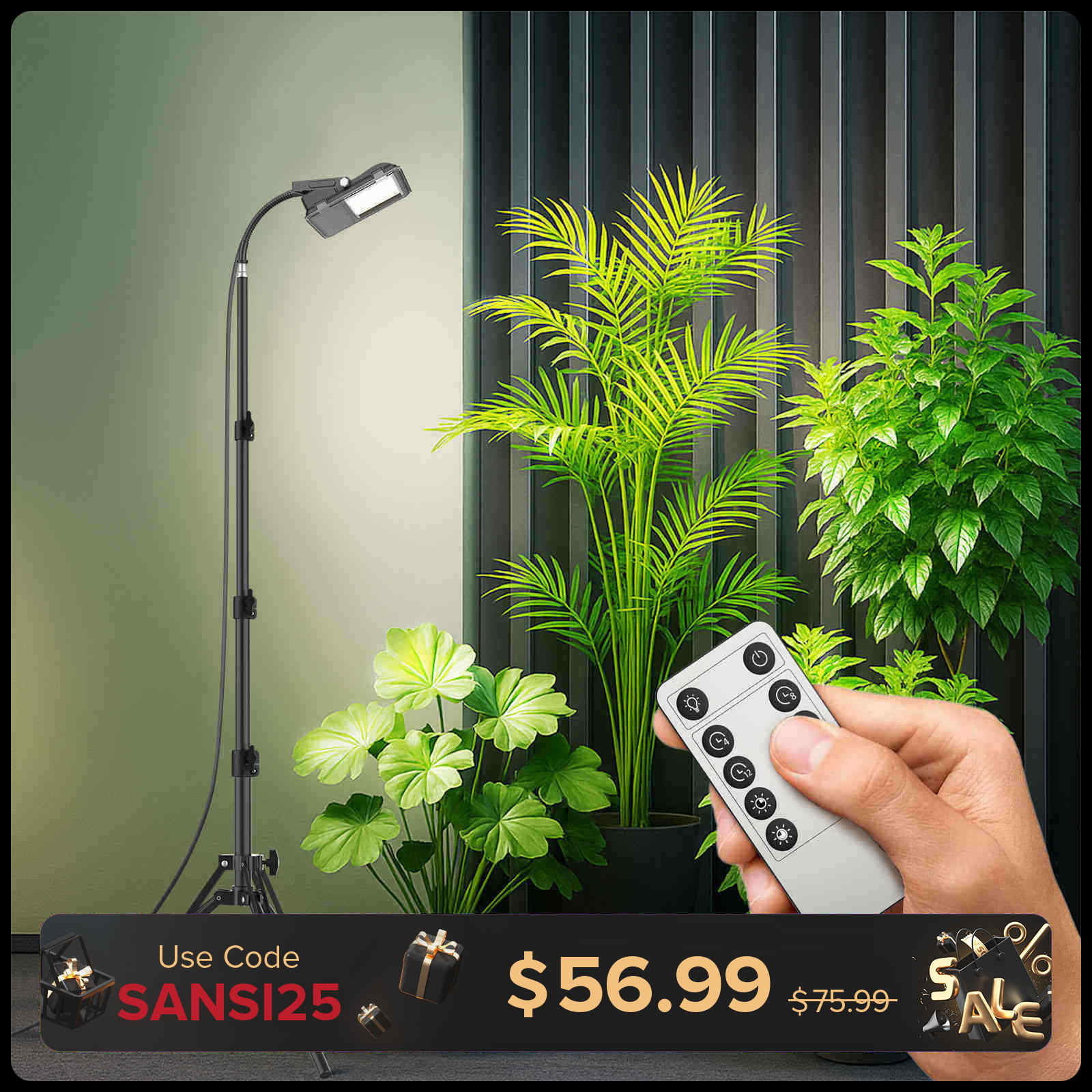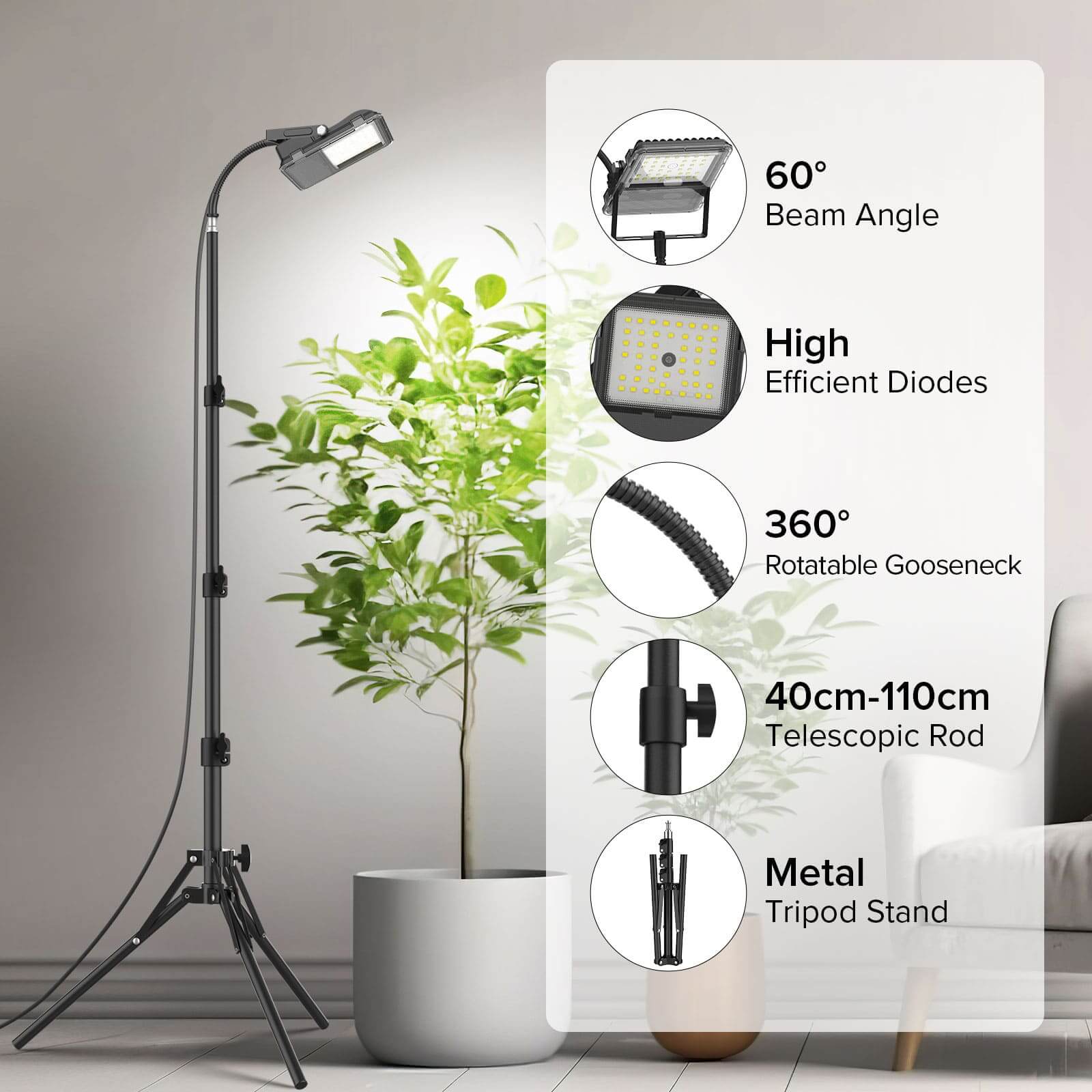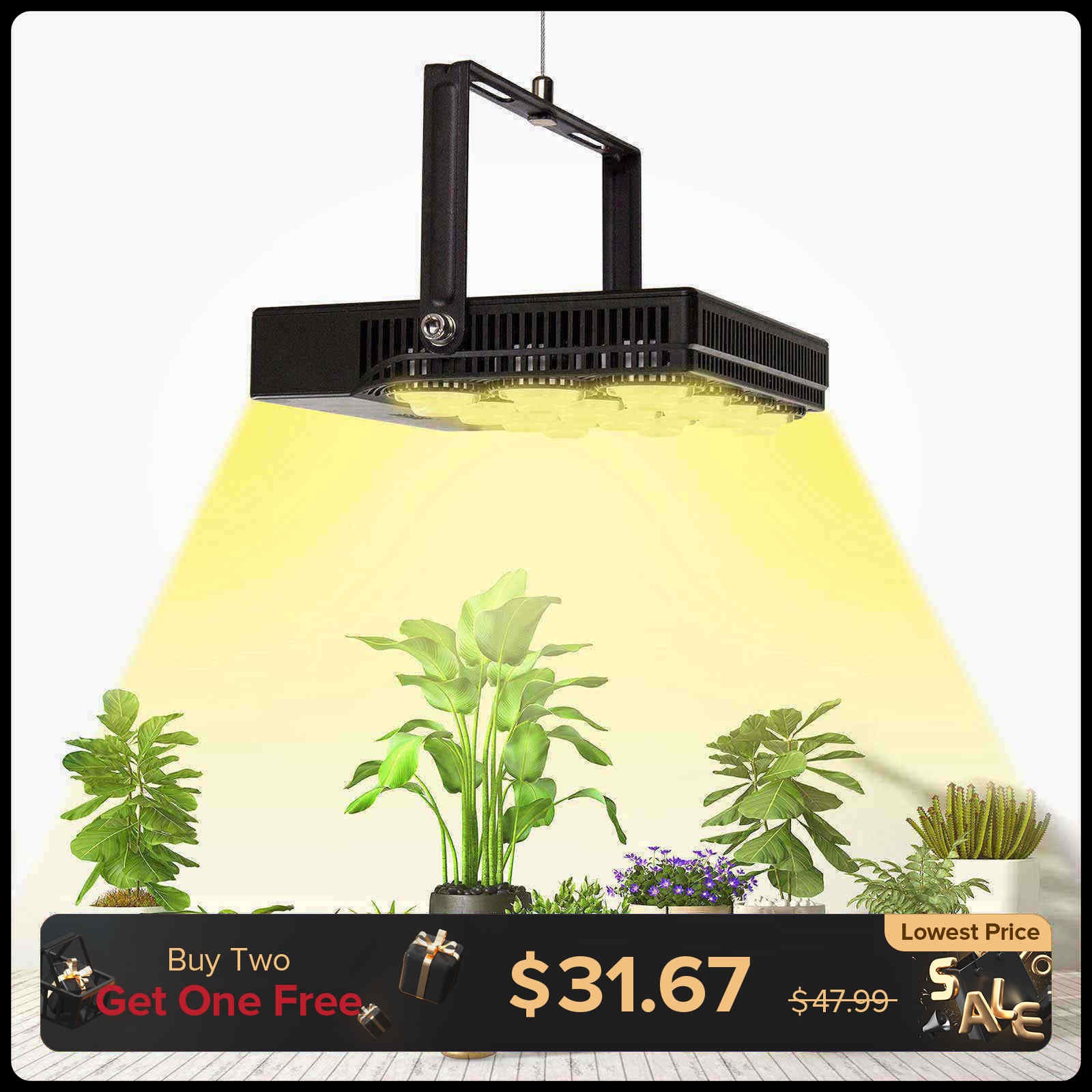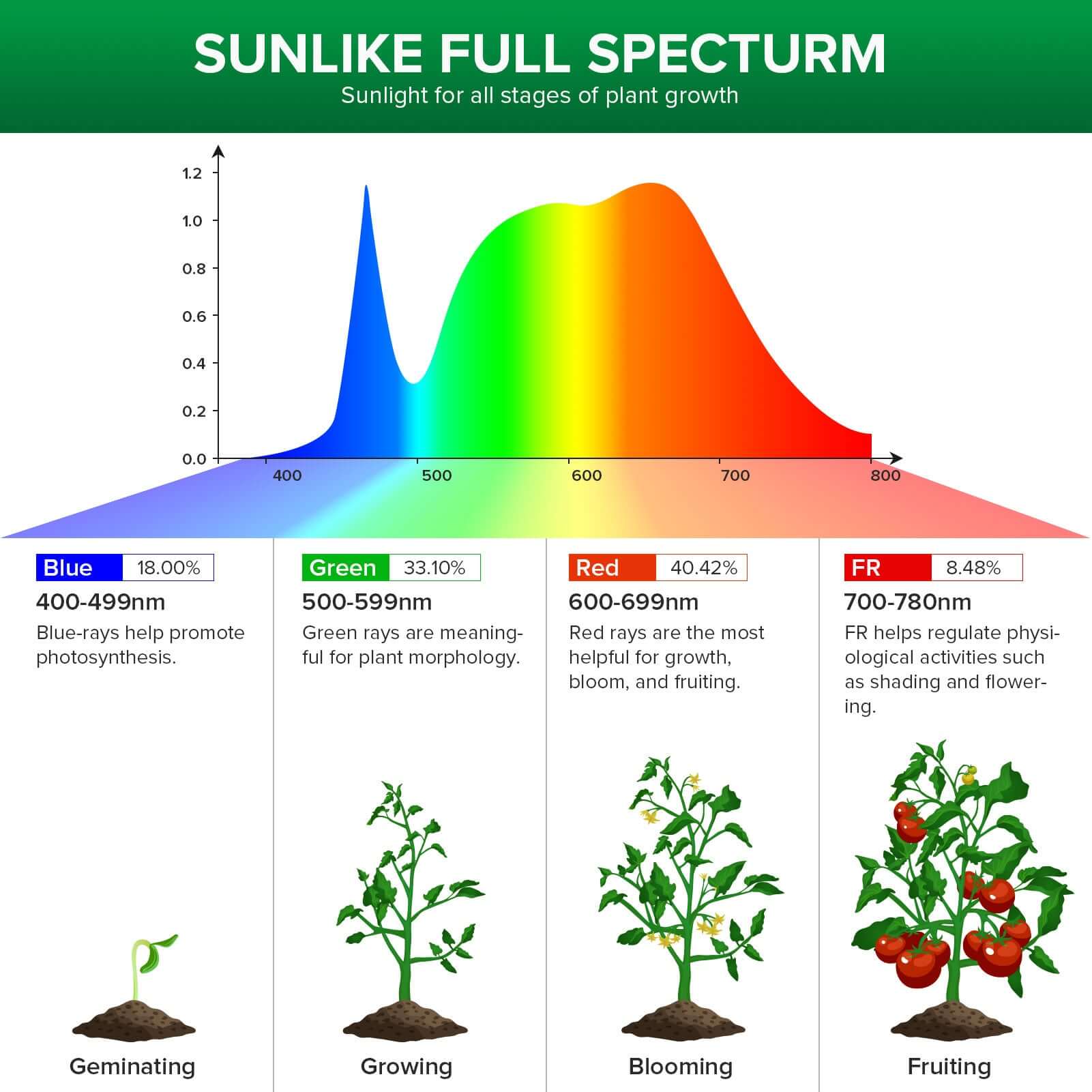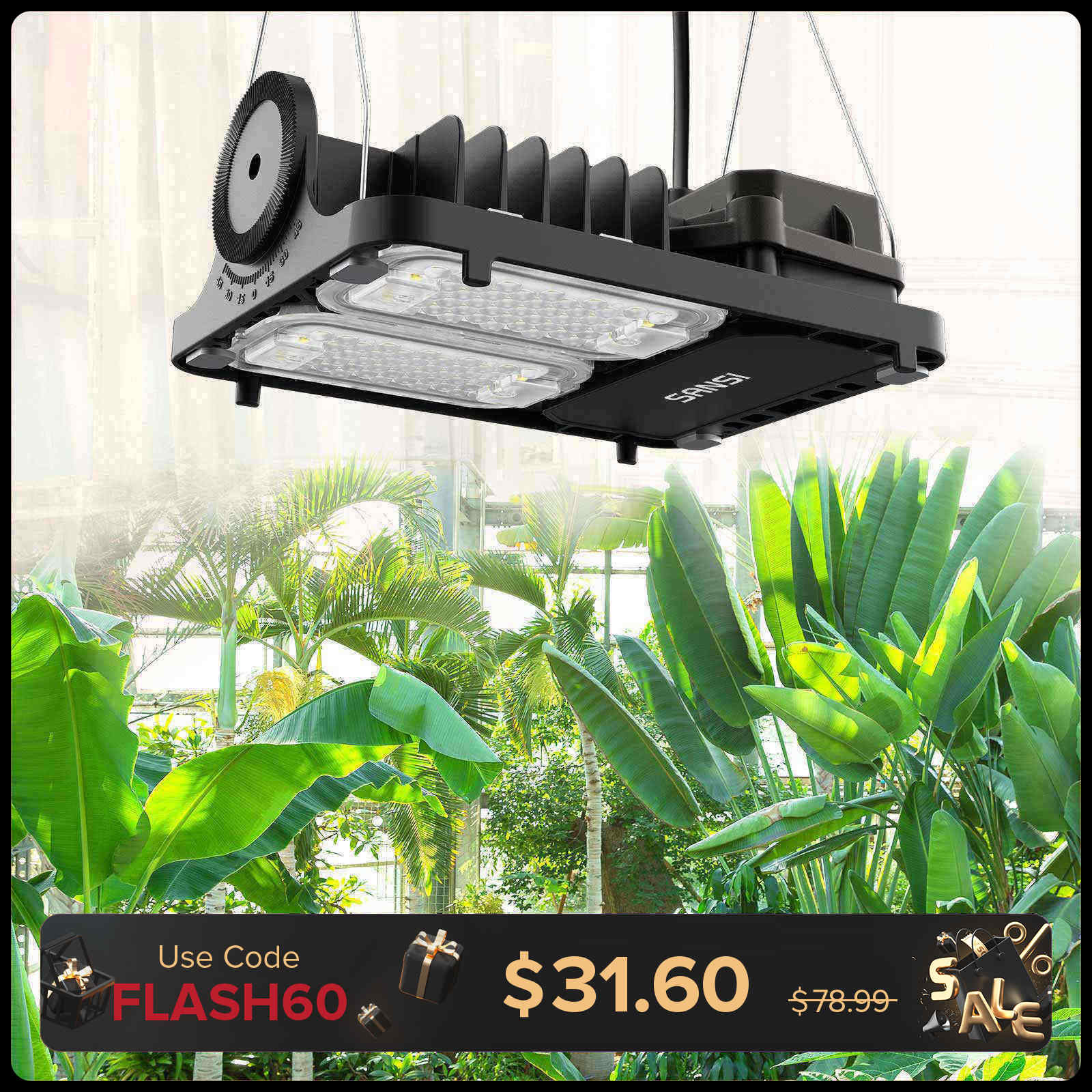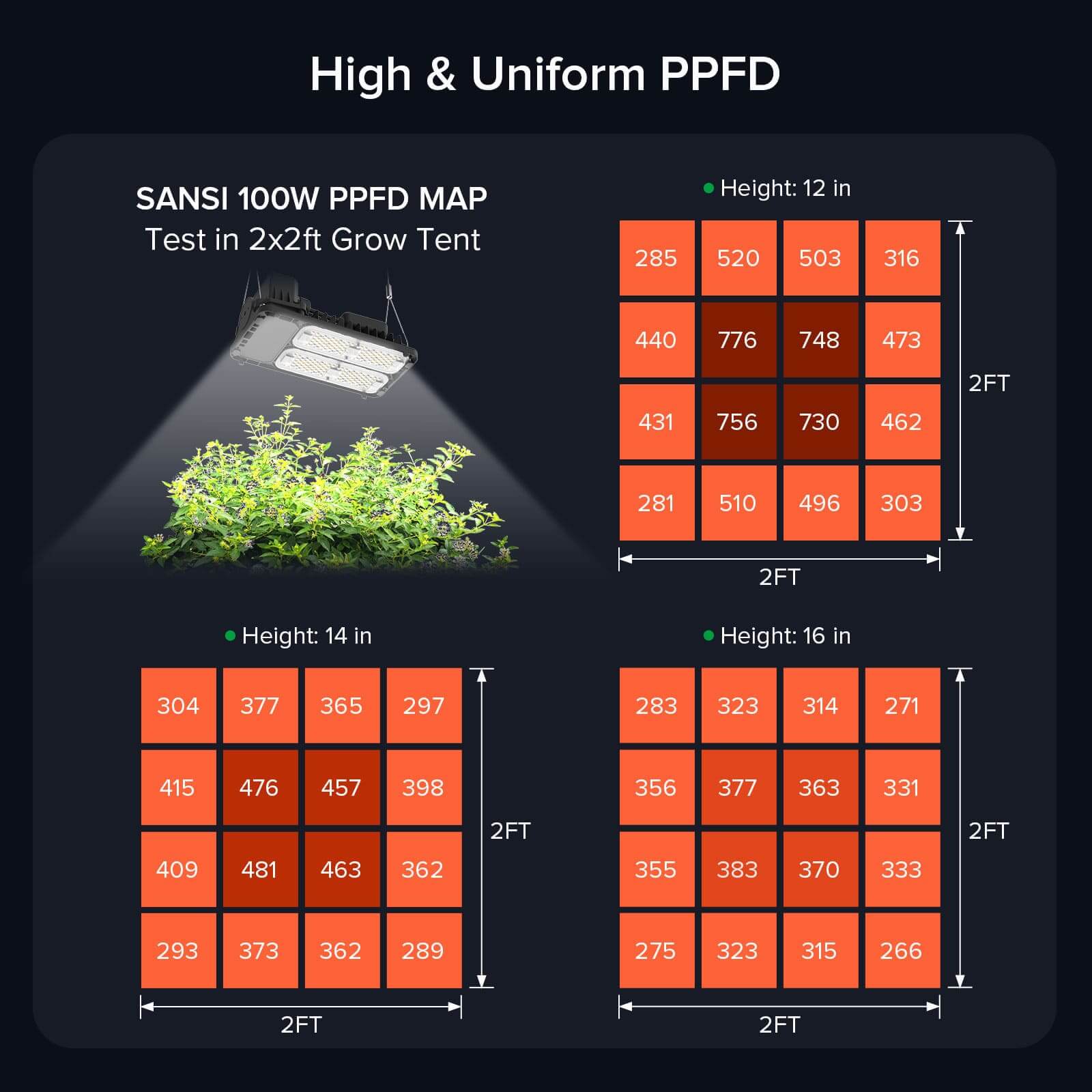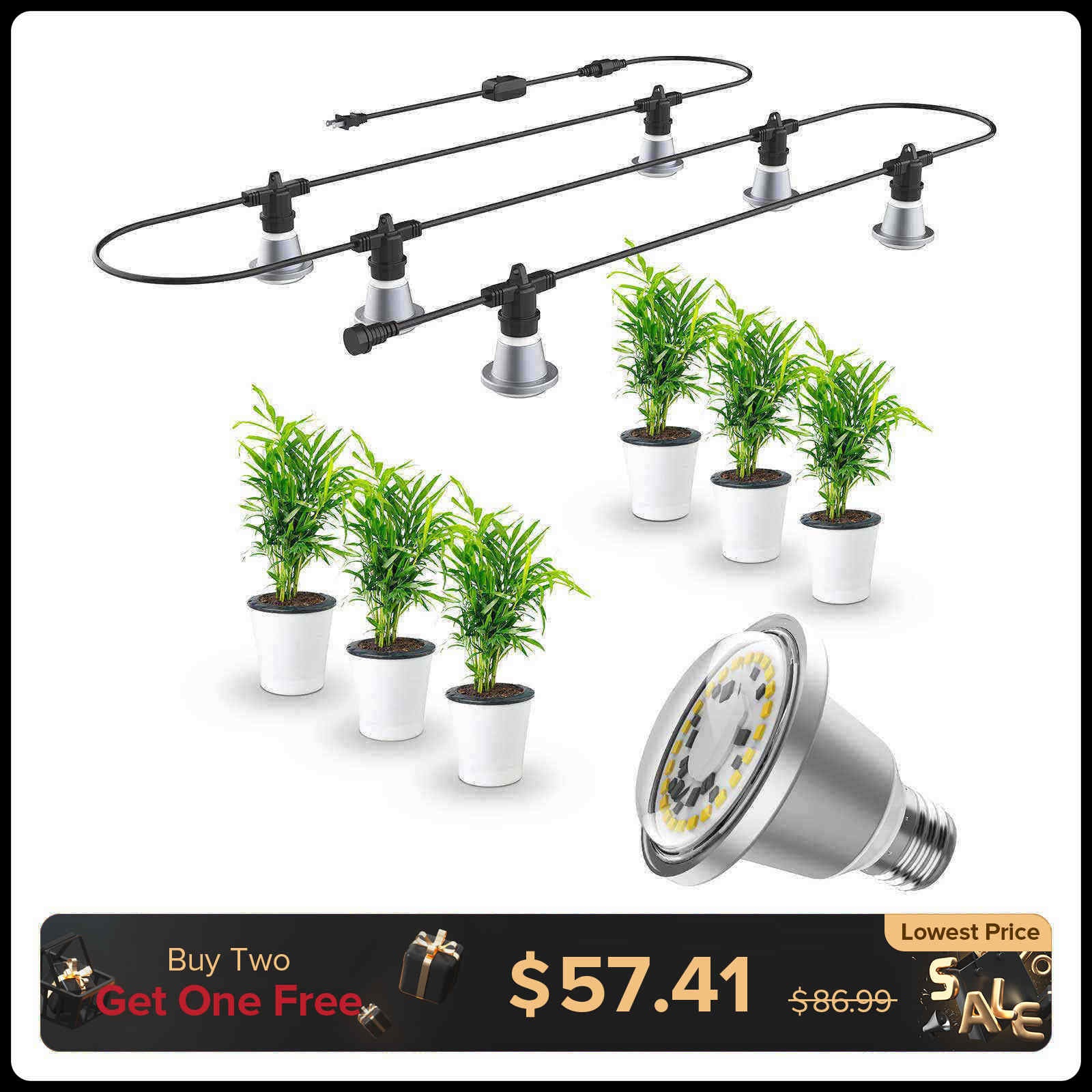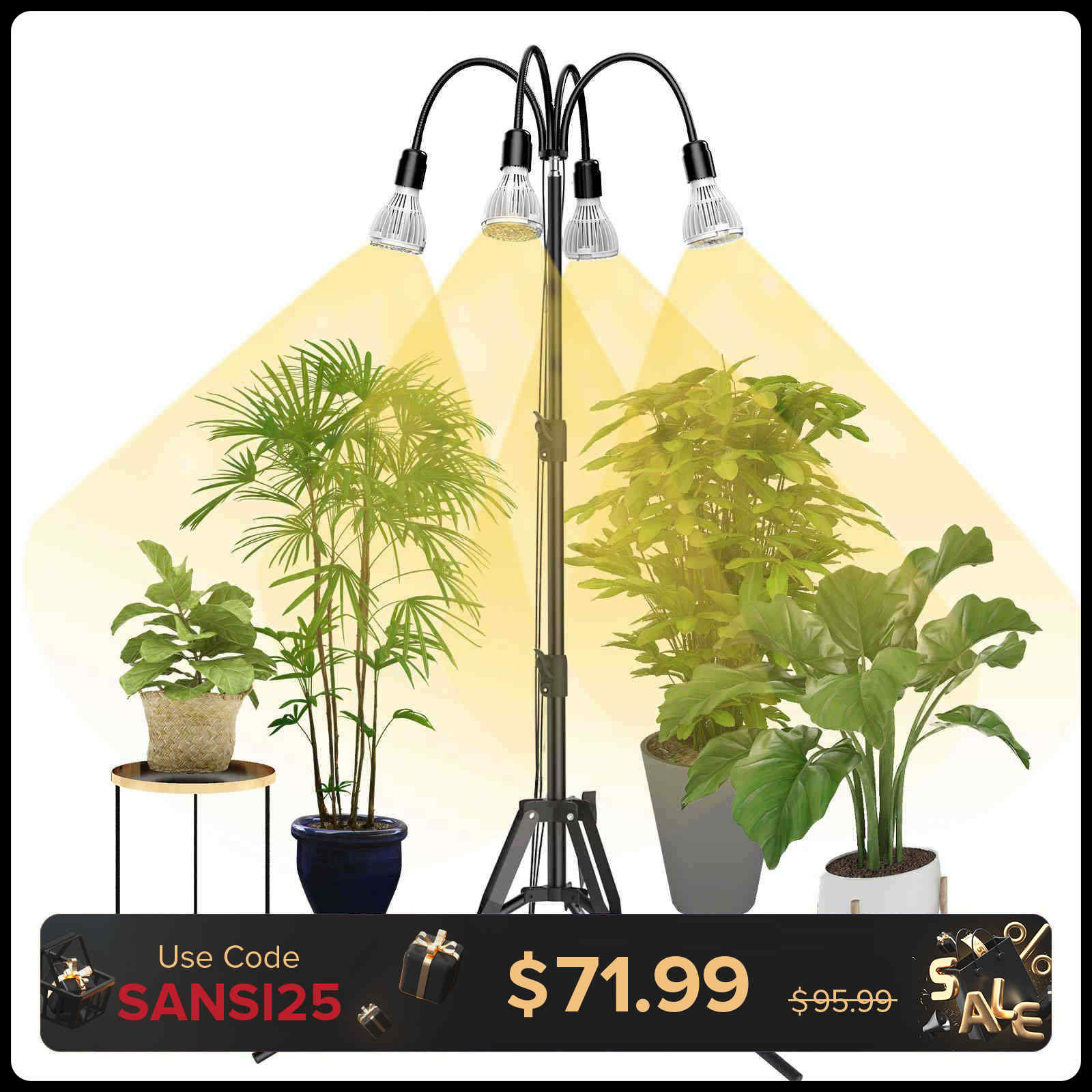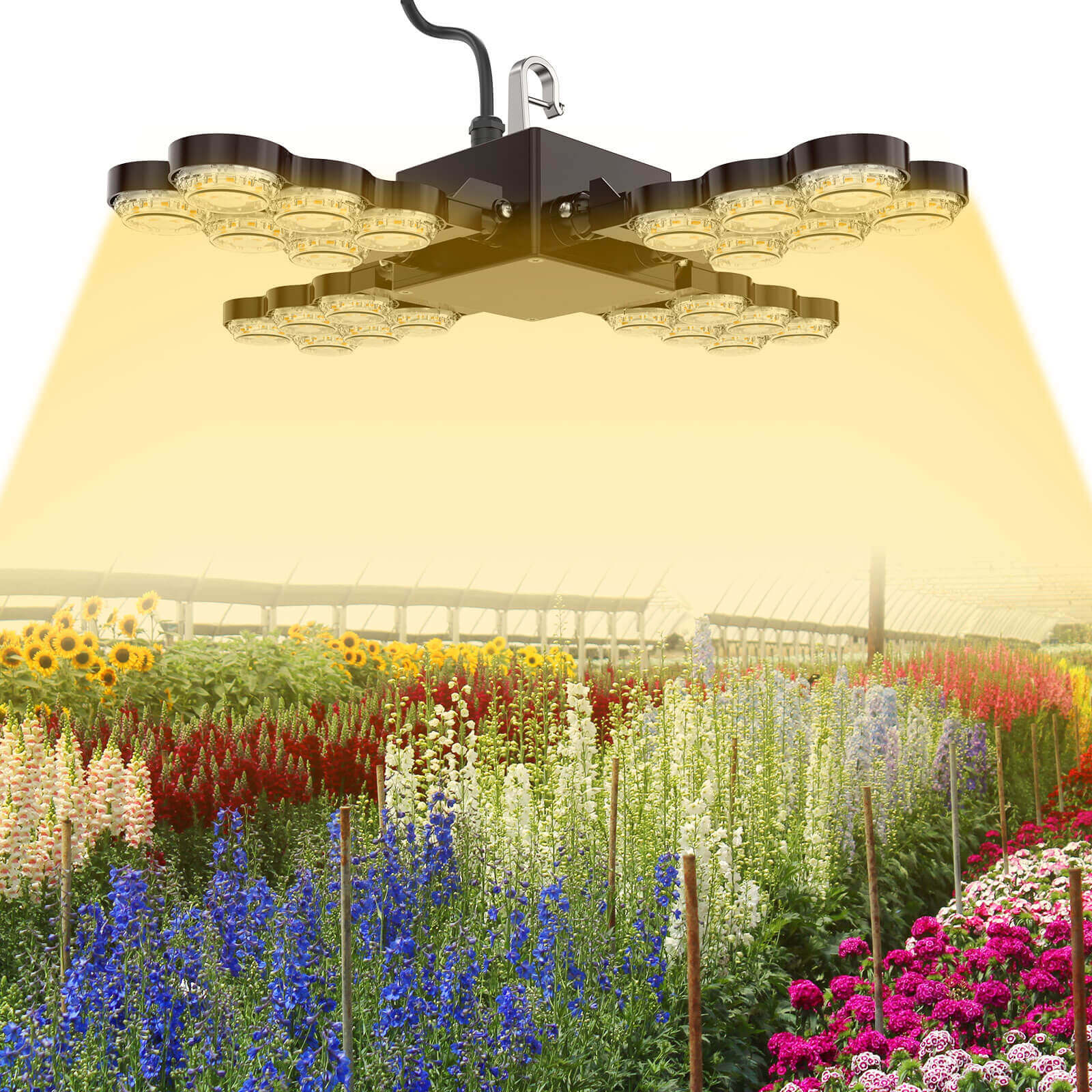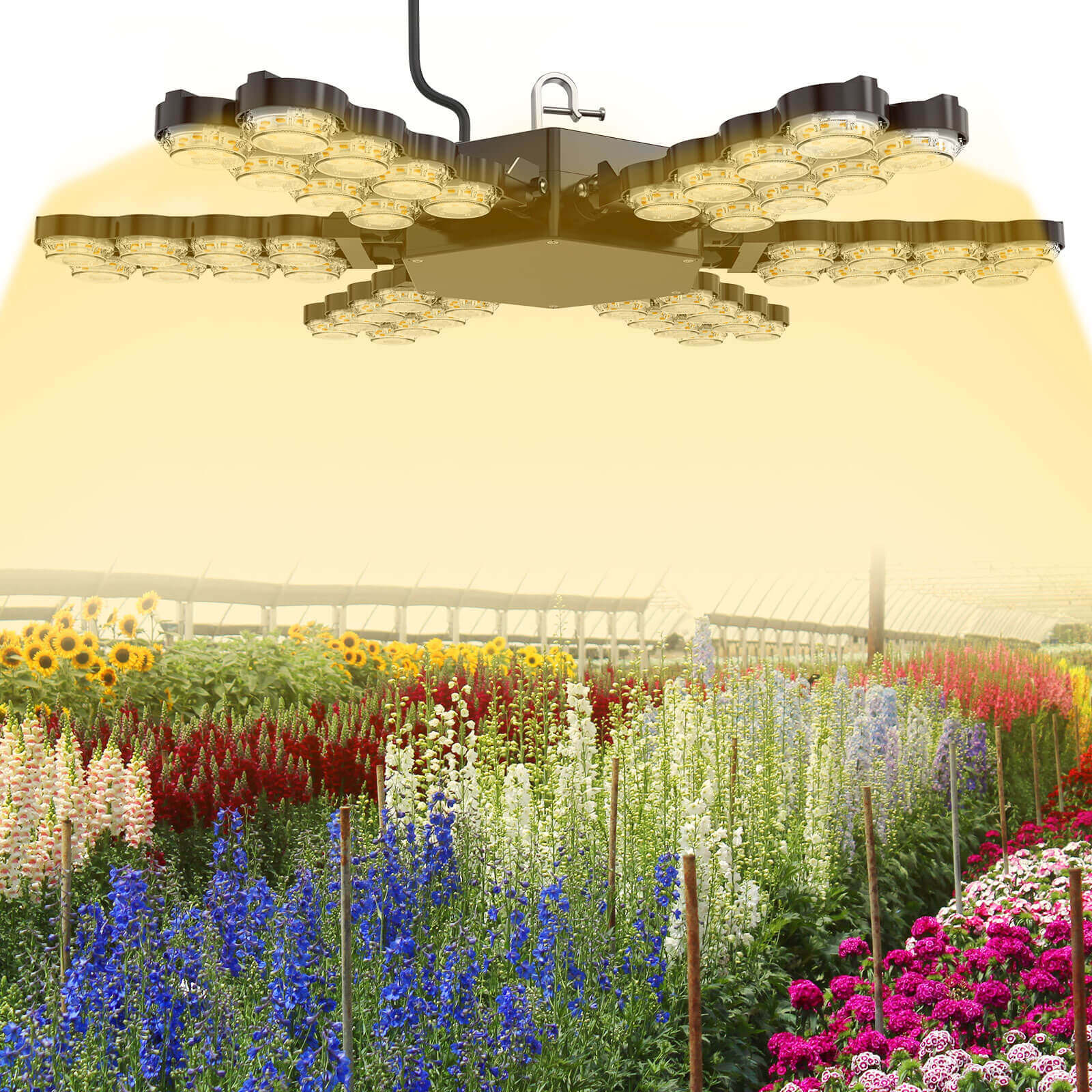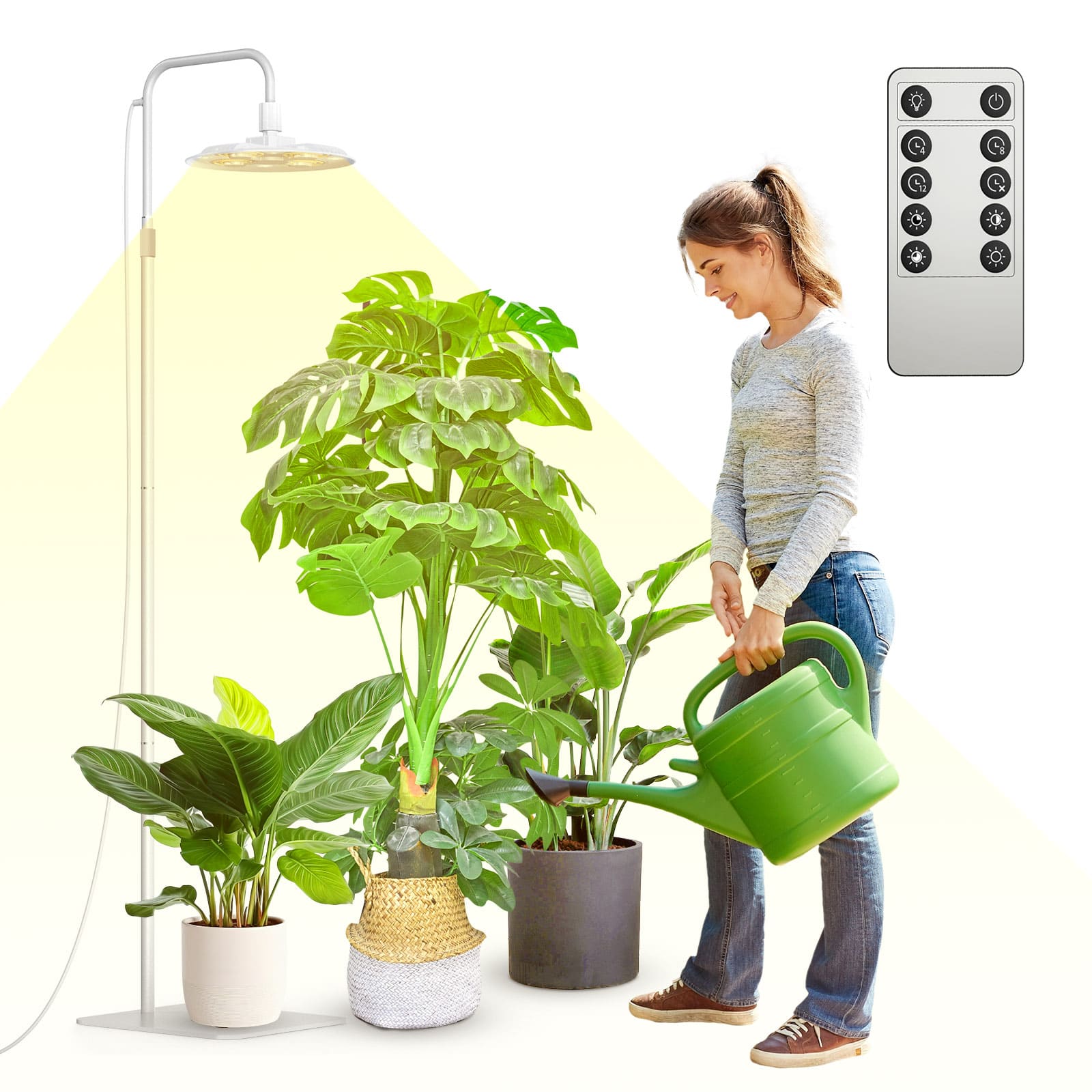Sansi Led Grow Lights FAQ
Many people struggle to keep houseplants in rooms or homes with little natural light. However, grow lights can help you maintain a thriving plant collection year-round. Most plants need at least some light to survive, as light is essential for their growth. Sansi grow lights are designed to mimic natural sunlight, enabling photosynthesis and promoting growth, blooms, and even fruit production.
Many plants don't need light until they've sprouted, so you'll start using grow lights once your seeds begin to germinate and the first leaves poke through the soil.
Before getting started, please consider your budget and how much space you have to devote for indoor plants. If you have a small space and are only starting 1 or 2 trays, an Led grow light bulb might be enough. If you want to start several trays and have space, you can purchase a ready-made grow lights.
Sansi offer different types of grow light bulbs and grow light lamps to meet different needs.
The main difference between Led grow lights and regular Led lights is the wavelengths of light they put out. Led grow lights produce a wider spectrum of wavelengyhs than the traditional Led or fluorescent lights.
In general, plants under grow lights need at least 8-10 hours of light per day, but no more than 18 hours - make sure your plants have at least 6 hours of rest per day.
Sansi plant lights use ceramic technology for better heat dissipation and lower energy consumption. Compared to similar products in the market, Sansi led grow light and led grow light bulbs are more energy-efficient at the same power level. Additionally, Sansi's led grow lights/bulbs utilize full-spectrum lighting that mimics sunlight, which not only helps plants germinate but also effectively aids in flowering and fruiting.
Ideally, your light would be placed above the plants as that simulates sunlight the best and also allows for the most even coverage.Led grow lights need to be at least 6 inches above your plants. You will have to adjust your light over time as your plant grows. Check regularly to make sure nothing is getting burned. The height of your light placement will affect the length of time you leave it on.
The light spectrum ranges through red, orange, yellow, green, blue and vilet. The colors at the far ends are most useful to plants but all colors are absorbed to some extent. Full spectrum is always the best choice or one that offers a mix of red and blue.
Blue light (and for the most part violet) is extremely important as it is how our plants get chlorophyll and therefore grow and strengthen their foliage.
Red light is needed for flowering varieties. You must be cautious when using this as too much red light can kill your plant which is why a lot of grow lights offer a mix of both red and blue so your plants are getting all their needs met.
Grow bulbs are a great options in that it allows you to swap out the regular bulbs for these indoor plant ones in any of your current light fistures, ceilings or lamps. This option is the cheapest but has a few downfalls. Because our light fixtures weren't specifically designed for plants, you may end up with uneven lighting of difficulty placing the light source at a correct distance.
Grow lights allow for the most plant success. Since they were designed specifically for this purpose, they will provide more even lighting, for multiple plants.



